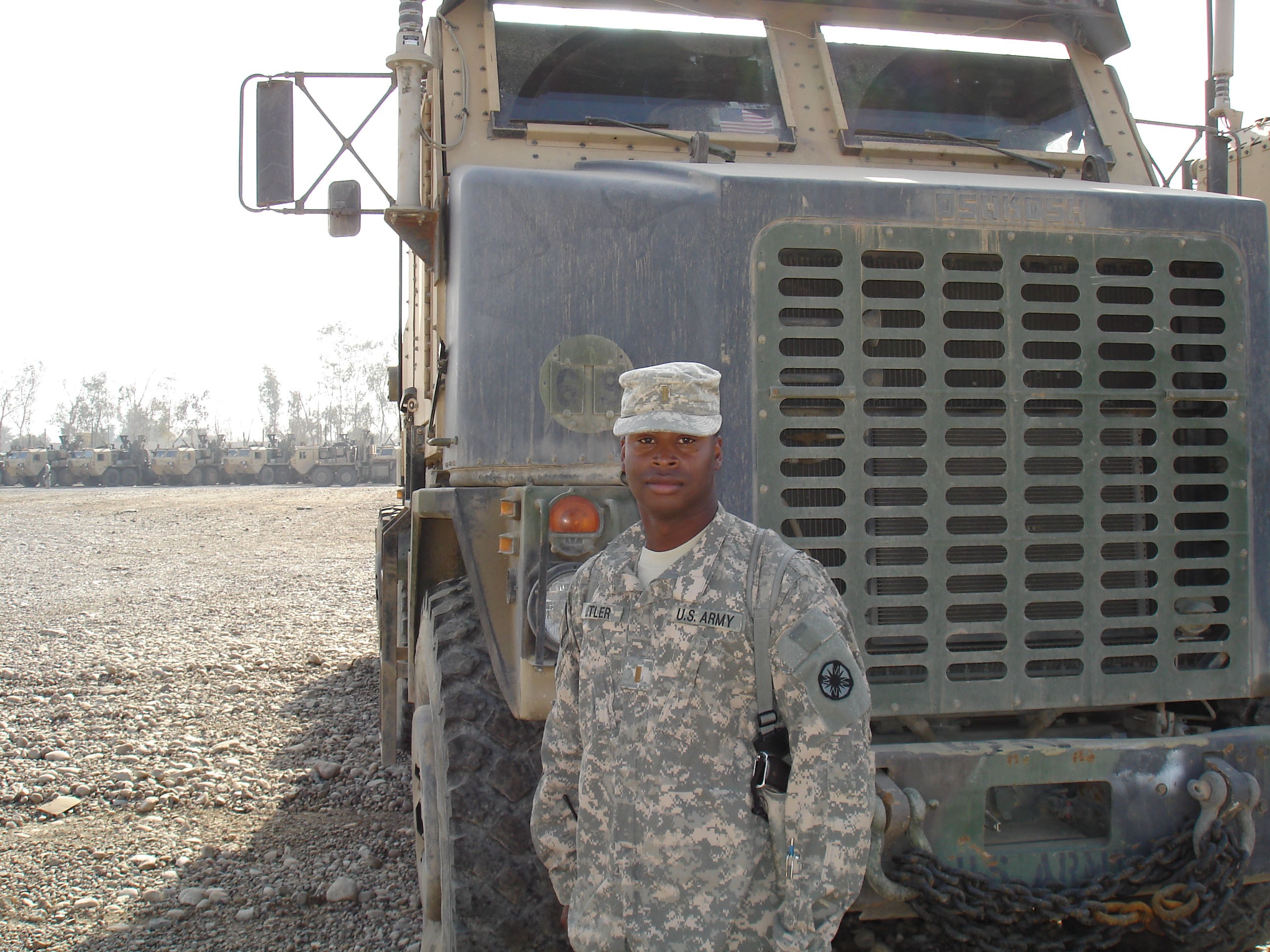CAMP LIBERTY, Iraq - Duties as a mission commander in the 154th Transportation Company, 553rd Combat Sustainment Support Battalion, 10th Sustainment Brigade, are complex and require a great deal of preparation.
While part of 10th SB during this deployment, the 154th falls under 180th Transportation Battalion, 15th Sustainment Brigade, 13th Sustainment Command (Expeditionary) at Fort Hood when not deployed.
Platoon leaders for Heavy Equipment Transport, Platoons in Iraq spend a great deal of time planning missions because the HET systems are in high demand. Missions begin when a company operations section receives a requirement from the battalion to move a specific piece of equipment such as a tank or Bradley Fighting Vehicle. The platoon leader then begins planning backwards using the Army's five paragraph Operations Order.
First, the mission commander concentrates on collecting intelligence on enemy forces and identifying other friendly forces in the area of operation. Then he factors in weather, light data, and terrain to help determine the best time for the mission. Once those factors are set and the mission commander knows as much about the situation as possible, he moves on to establish his mission statement.
The mission is a detailed statement that informs the Soldier of the task that is required for them to perform. This statement is clear, concise, and always read twice. It contains the five Ws: who is involved, what they will do, when the start time is, where to begin, and why the mission is necessary. A good mission statement always contains the five Ws and can stand alone so that it is understood without other supporting documents.
Once the mission commander establishes a solid mission statement, he can begin to write his detailed plan for execution of the mission. The execution section of the OPORD is the longest and most important section to cover when a leader briefs their Soldiers. In this section, the mission commander details about the route of travel, timeline, order of vehicles, travel speed, and battle drills. All aspects are important. But battle drills are critical because they instill in the Soldier instinctive responses for how to react when something goes wrong.
Similarly, rehearsals are another vital portion of the execution section. The mission commander rehearses several battle drills with the Soldiers prior to each mission, so the steps are always fresh in their minds. Amidst stress, confusion, and uncertain circumstances, Soldiers rely on time-tested battle drills that have been rehearsed again and again to get them through sticky situations and back to safety.
Service and support - the fourth step in the OPORD - includes identifying fuel, maintenance, and medical facilities along the specified route that can be used if necessary. Most camps along the route store fuel, so vehicle operators could make an unplanned stop for refuel if required. Maintenance support is included in the convoy to some degree. For example, each wrecker has light maintenance capability for onsite repairs. If an onsite fix is unfeasible, a downed vehicle can easily be towed to the destination for repair within the safety of a camp. Finally, for medical support each convoy includes multiple combat lifesaver personnel, as well as identified medical facilities along the route. Combat lifesavers can administer first aid, IV fluids, and apply tourniquets if necessary, to prepare injured Soldiers for transport to the nearest medical facility.
The last step in the mission commander's OPORD is command and signal. Here, he identifies who will take charge of the convoy if he can no longer perform those duties. It is crucial for each Soldier to understand who is in charge to avoid confusion during stressful situations and to prevent added conflict if the convoy is under attack. The Assistant Mission Commander is the next in charge after the mission commander, followed by the next non-commissioned officer according to rank and order of merit. During this step, the mission commander also outlines what types of communication and signals will be used during the convoy. A successful mission is dependent upon reliable, clear communications between vehicles and leadership in each convoy mission.
The duties and responsibilities of a mission commander in the 154th Trans. Co. are complicated, but they pay dividends when a successful mission is completed. The Army's five paragraph OPORD is an effective tool when planning any type of military operation, and it is proven to save lives when used correctly. Planning must be conducted to standard each and every time.


Social Sharing